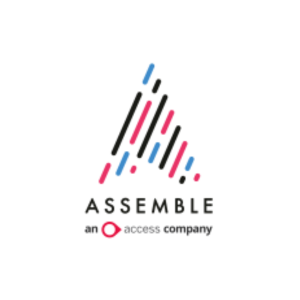Insights
INSIGHTS
All Topics
My Account
What charities can learn from board diversity
23 Jul 2021by Laura Stanley
We explore the benefits of diversity in trustee teams and the value of term limits
The role of any charitable board is to lead their organisation down the path towards achieving its goals. The chances of trustees discovering the right path quickly improve when the leadership team is diverse, both in thought and lived experience.
Studies have shown that organisations with greater diversity in leadership are more innovative, more likely to have financial returns above their industry average, and are eight times more likely to achieve positive business outcomes.
Yet charities risk falling behind. Research from Inclusive Boards found that only 6.6% of trustee roles were held by people from an ethnic minority background, compared to 8.2% on boards in the FTSE100. The study also showed that more than three in five of the UK’s largest charities had all-white boards.
There was slight improvement when it came to gender diversity, but the balance remained tilted in favour of men, who held nearly 60% of senior leadership positions, despite women accounting for two thirds of the charity sector’s workforce.
It seems that trustee recruitment is the toughest nut to crack for charities. Almost 80% of trustees said they were recruited through an informal process, such as an approach by a current chair or member of the board, according to a report by CASS Business School.
This is where board management tools like OnBoard can help. Proactively planning future board composition and keeping abreast of upcoming term limits allows teams to put diversity top of the agenda – and with good reason.
Staying agile
Having a more diverse board – crucially one in which trustees feel included – increases an organisation’s agility. Trustees with a variety of professional backgrounds and experiences will have different skillsets.
This not only reduces risk – potentially problematic communications, for example, are more likely to be flagged when considered by people with different experiences – but also vastly improves decision-making.
By committing to equality, diversity, and inclusion, charities are better placed to keep their finger on the pulse, enabling them to stay relevant to their communities and deliver its services in the most beneficial way.
Furthermore, it improves employee recruitment and retention. A visible commitment to diversity at the very top of an organisation shows employees, both current and prospective, that there is room for them to grow, whatever their background or demographic.
Ensuring representation matters
This is where inclusion comes in. It is important to ensure that any commitment to improving diversity on the board isn’t a box-ticking exercise. Diversity comes in many forms – gender, race, age, neurodiversity – and reaps the best rewards when looked at holistically. Not only does it avoid falling into tokenism, it also ensures that organisations benefit from diversity of thought.
“Diversity is only part of the story," points out L. Robin Cardozo, co-author of the Not-For-Profit Board Diversity and Inclusion report. “Without an equal commitment to inclusion, it’s going to fail.”
If board members do not feel included, the likelihood of them speaking up and offering the benefit of their lived experience remains small. Cardozo’s report adds: “Every board member needs to have a clear sense of how he or she can contribute, based on a customized engagement plan. Every board member needs to feel that they are participating in board discussions, and that their input is welcome.”
For the Young Trustees Movement, for example – an organisation that aims to see more young people represented on charity boards – this means: “recruiting diverse new members...is not ‘done’ once new members have joined the board. Existing trustees must take responsibility to continue to advance the diversity agenda, and ensure new voices are being heard and integrated in the organisation.”
Redressing the balance of power
Sometimes this means actively making way for those new voices. OnBoard highlights that nearly a third of boards don’t have term limits, despite the way it brings in new ideas and helps current board members to step down if they are struggling with other commitments or are simply ready to move on.
It also provides a “respectful and efficient mechanism for the exit of passive, ineffective, or troublesome board members”. This is especially important when it comes to improving diversity.
As the Young Trustees Movement notes, “when the existing group of trustees is not particularly diverse, it makes it even harder to welcome and meaningfully integrate different voices into a trustee board”.
When power has rested in the same hands indefinitely, necessary change is harder to come by. The Charity Governance Code adds: “Recognising and countering any imbalances in power, perspectives and opportunities in the charity, and in the attitudes and behaviour of trustees, staff and volunteers, helps to make sure that a charity achieves its aims.”
Regularly reassessing the status quo can be a great way of keeping charities on the right path, making sure they have as many options at their disposal as possible, with as many perspectives as possible, over time.
As George R.R. Martin wrote, “Different roads sometimes lead to the same castle.” If everyone on the board has taken a different path, you’re more likely to find the smoothest journey.
Find out more
Click here to check out OnBoard's White Paper Smart Diversity: Board Composition as a Competitive Advantage
Laura Stanley
More on this topic
Recommended Products
Our Events
Charity Digital Academy
Our courses aim, in just three hours, to enhance soft skills and hard skills, boost your knowledge of finance and artificial intelligence, and supercharge your digital capabilities. Check out some of the incredible options by clicking here.















